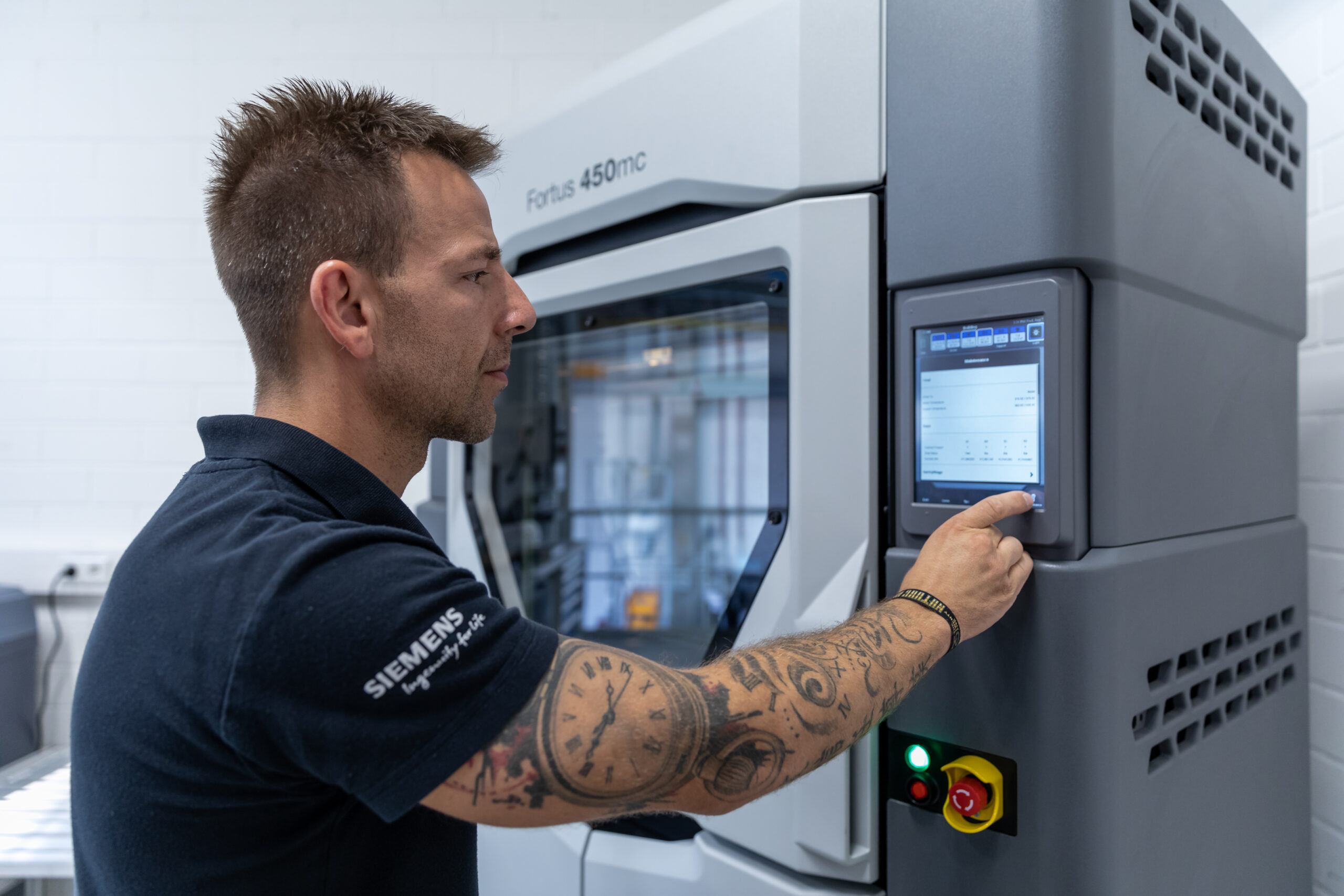Collaborating to industrialize additive manufacturing

Creating the industry of tomorrow is a big goal, companies have been proclaiming they can deliver it probably as long as there has been industry to improve. It is a very bold claim, but more often than not, changes come about through parallel development by many. Two great examples are internal combustion engines and the light bulb. There were many people working on these technologies simultaneously, but without understanding the failures of others progress would likely have been much slower. Eventually, the otto cycle for engines and the tungsten filament for light bulbs were adopted as standard decisions and innovation could be found in other areas of the designs. Siemens is trying to jump-start a similar expansion of knowledge for additive manufacturing (AM).
Pushed by Siemens Digital Industries, Siemens Technology, and Siemens Energy the Charlotte Advanced Technology Collaboration Hub (CATCH) in North Carolina may find the revolutionary process to make AM ubiquitous. CATCH is meant to aid collaboration between machine builders, end-users, and national laboratories to accelerate the industrialization of AM processes. This approach also sidesteps some of the investment costs associated with developing a new industry paradigm on your own. Partners have access to state-of-the-art hardware so that machine builders can learn how to improve their machines, material suppliers can optimize their products, and users can refine the development process.
A reduced barrier to entry also widens the pool knowledge pool to improve AM technologies and processes. Small or medium sized businesses may not have the capital to invest in personal printers, and even if they do it is important to know whether a process will benefit from the technology. CATCH is almost like a printing library; users can get a handle on the process and understand the benefits it brings to their development process. Their knowledge is contributed back and as they grow more confident in their skills and the technology, investment is more manageable. The kinks have already been worked out and bringing the technology inside the organization streamlines development while also creating a more resilient supply chain.
Collaboration is extremely important for the future of AM, as it is still such a new manufacturing process compared to the rest of the industry. Accelerating its path to viability will require collective work to find best practices for more than a handful of materials and to update them as new technologies are released. But collaboration will also benefit the variability of products, not just the printing process. New materials can open up a wide range of applications, as printed silicon carbide has for the nuclear energy industry. These design evolutions will bring grater performance to existing systems and create avenues for the yet-to-be-imagined. Bringing together such a diverse group of stakeholders will accelerate AM learnings immensely.
Working together on the future of additive manufacturing will be important to it’s prosperity and the value we will attain from the advancements. Our vehicles could be lighter, using less energy to move us around. Our utilities could more efficiently move or separate fluids and particulate, making reuse a viable solution to water conservation. And electricity generation could become powerful, providing more electricity from the same energy inputs, whether it is nuclear fuel or wind through a turbine that has been optimized with AM exclusive geometries. The future of AM is bright and I’m excited to see what results from such a diverse collaborative effort.
Siemens Digital Industries Software is driving transformation to enable a digital enterprise where engineering, manufacturing and electronics design meet tomorrow. Xcelerator, the comprehensive and integrated portfolio of software and services from Siemens Digital Industries Software, helps companies of all sizes create and leverage a comprehensive digital twin that provides organizations with new insights, opportunities and levels of automation to drive innovation.
For more information on Siemens Digital Industries Software products and services, visit siemens.com/software or follow us on LinkedIn, Twitter, Facebook and Instagram.
Siemens Digital Industries Software – Where today meets tomorrow


